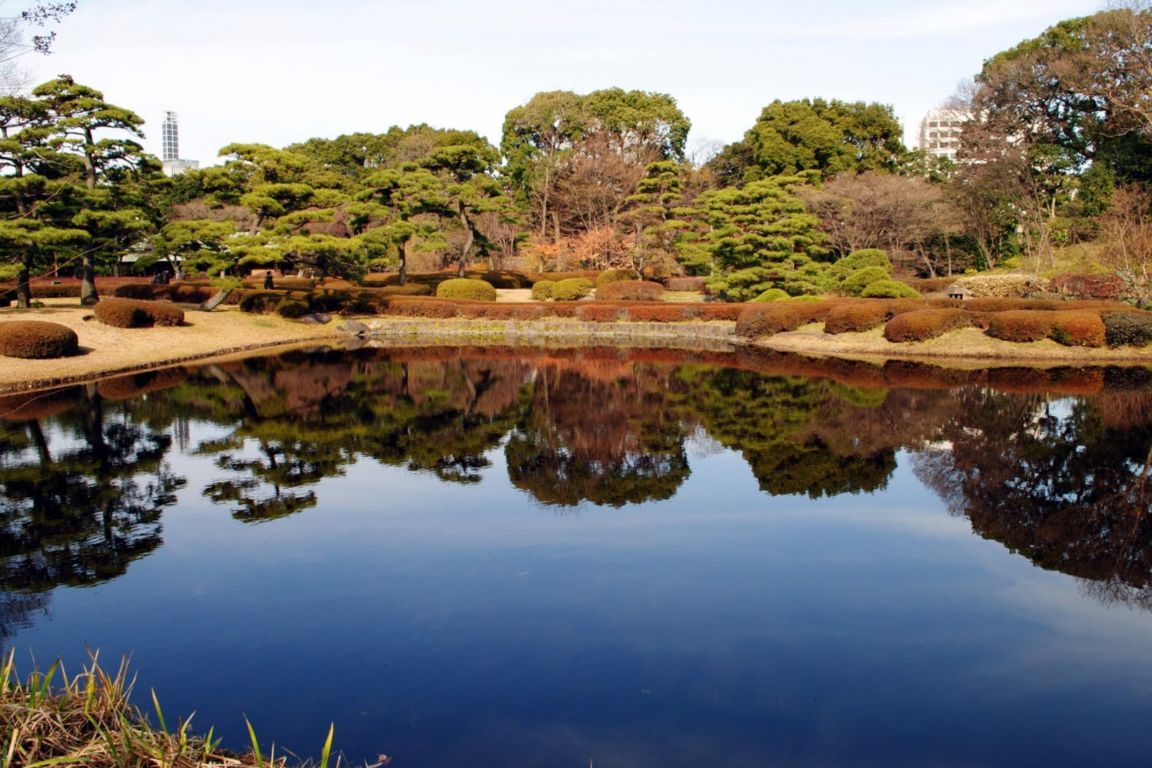Imperial Palace
The current Imperial Palace (皇居, Kōkyo) is located on the former site of Edo Castle, a large park area surrounded by moats and massive stone walls in the center of Tokyo, a short walk from Tokyo Station. It is the residence of Japan's Imperial Family.
Edo Castle used to be the seat of the Tokugawa shogun who ruled Japan from 1603 until 1867. In 1868, the shogunate was overthrown, and the country's capital and Imperial Residence were moved from Kyoto to Tokyo. In 1888 construction of a new Imperial Palace was completed. The palace was once destroyed during World War Two, and rebuilt in the same style, afterwards.
From Kokyo Gaien, the large plaza in front of the Imperial Palace, visitors can view the Nijubashi, two bridges that form an entrance to the inner palace grounds. The stone bridge in front is called Meganebashi (Eyeglass Bridge) for its looks. The bridge in the back was formerly a wooden bridge with two levels, from which the name Nijubashi (Double Bridge) is derived.
The inner grounds of the palace are generally not open to the public. Only on January 2 (New Year's Greeting) and December 23 (Emperor's Birthday), visitors are able to enter the inner palace grounds and see the members of the Imperial Family, who make several public appearances on a balcony.
Furthermore, guided tours of the palace grounds are offered during the rest of the year, although no buildings are entered. The tours are held in Japanese, and an English pamphlet and audio guide are provided. The tours must be reserved in advance through the Imperial Household Agency (see links below).
The Imperial Palace East Gardens are open to the public throughout the year except on Mondays, Fridays and special occasions. More information is available on the East Gardens page.
The Imperial Palace East Gardens (皇居東御苑, Kōkyo Higashi Gyoen) are a part of the inner palace area and are open to the public. They are the former site of Edo Castle's innermost circles of defense, the honmaru ("main circle") and ninomaru ("secondary circle"). None of the main buildings remain today, but the moats, walls, entrance gates and several guardhouses still exist.
Edo Castle was the residence of the Tokugawa shogun who ruled Japan from 1603 to 1867. Emperor Meiji also resided there from 1868 to 1888 before moving to the newly constructed Imperial Palace.
A wide lawn and the remaining foundation of the former castle tower can be found on top of the hill, where the castle's innermost buildings once stood. The castle tower was completed in 1638 as the tallest castle tower in Japan's history. But only a few years later in 1657, it was destroyed by citywide fires and has not been rebuilt ever since.
In place of the former buildings in the secondary circle of defense (ninomaru) at the foot of the hill, a nice Japanese style garden has been created.



































